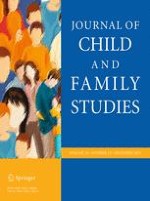12-04-2015 | Original Paper
Coping as a Mediator Between Negative Life Events and Eudaimonic Well-Being in Female Adolescents
Gepubliceerd in: Journal of Child and Family Studies | Uitgave 12/2015
Log in om toegang te krijgenAbstract
Further understanding surrounding the process of adolescent resilience is required. With a sample of 173 female adolescents aged between 13 and 15 years (M = 13.98, SD = 0.39), this study explored relationships among negative events, coping, and eudaimonic well-being. Coping was tested as a mediator of the relationship between negative events and eudaimonic well-being. Participants completed a battery of self-report measures. Negative events were inversely related with eudaimonic well-being and engagement coping, but not significantly associated with disengagement coping. Primary and secondary control coping mediated associations between negative events and all eudaimonic well-being dimensions, excluding secondary control as a mediator of negative events and purpose in life. Implications regarding the refinement of resilience and informing psychological interventions are discussed.
